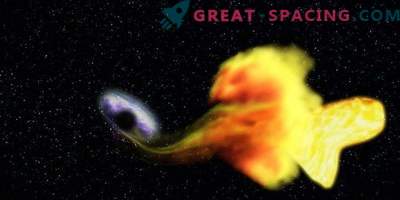
The Japanese spacecraft Akatsuki observed a 6,200-kilometer structure. They are believed to have been created by mountains on the surface of Venus.
Venus is wrapped in thick clouds of sulfuric acid, circulating around the planet at a speed of 225 miles per hour. But not everything in the atmosphere is moving.
On December 7, 2015, during its first orbit around Venus Akatsuki, a giant arc-shaped structure in the upper atmosphere caught my eye. The strange thing is that it remained motionless in the mountainous area known as the western highlands of Aphrodite.
She remained in a stable condition until December 11. Five days later, when the long-wave infrared camera was able to observe, the bright area disappeared.
“We believe that these are gravitational waves,” wrote physicist Makoto Taguchi from Rikke University in Tokyo. “We studied all the possibilities, among which there is a heat wave or instrumental errors, but they were excluded for a gravitational wave.”
As on Earth, gravitational Venus could be caused by disturbances in stable layers of the atmosphere, such as wind flow over a mountain range. The effect is reminiscent of ripples produced by throwing a stone into a calm pond. Do not confuse gravitational waves with the newly discovered cosmological phenomenon - gravitational waves, which exist due to the bending of space and time, created by extremely massive objects, like merging black holes.
Taguchi and his colleagues believe that the whole reason in the mountains of the planet. The arcuate structure, warmer than the environment, has risen to a height of about 40 miles.
Computer models show that they can spread to such huge sizes and heights. But we need observations near the planet to understand the details.
“We believe that the winds in a deep atmosphere may be spatially or temporarily more variable than previously thought,” the study says.
Additional observations Akatsuki, which will operate until 2018, will help answer questions.











































